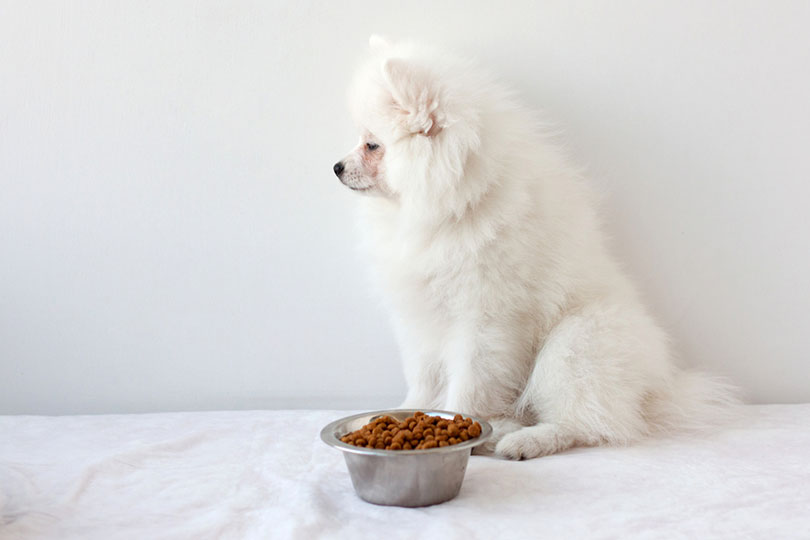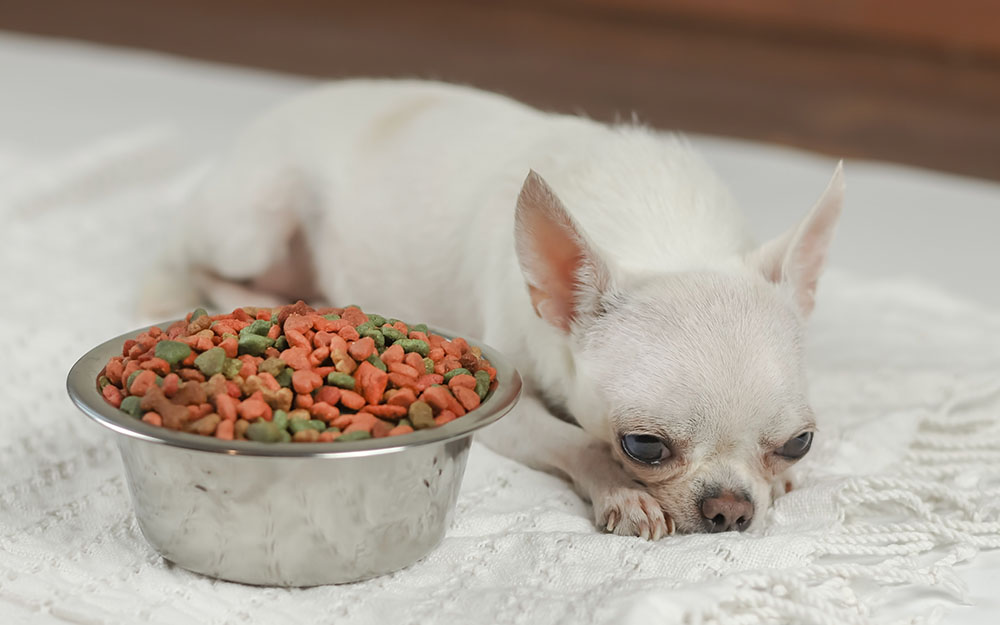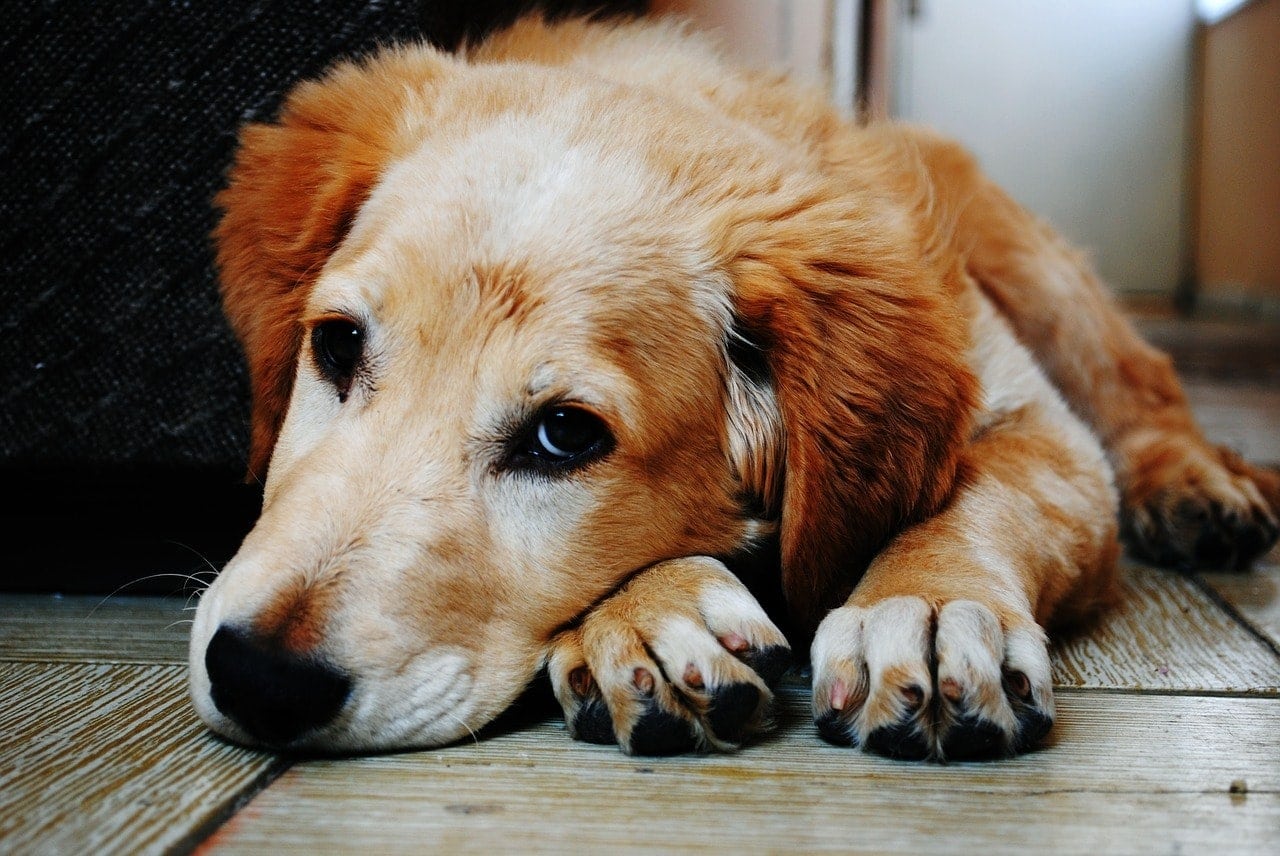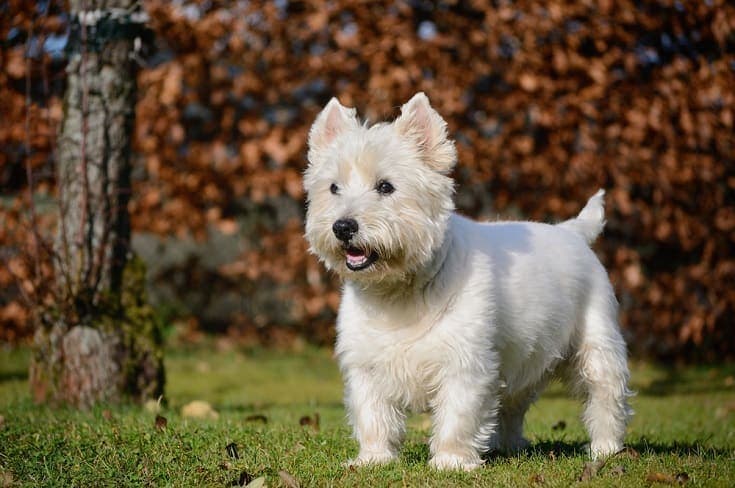Why Does My Dog Walk Away From Their Food? 8 Common Reasons
Updated on

Dogs sometimes do funny things that we don’t understand. Some of these odd behaviors happen during mealtimes. For example, you may notice your dog walking away from their food.
In this article, we look at eight common reasons that this might be happening and what you can do to fix it.
The 8 Most Common Reasons Why a Dog Walks Away From Its Food
1. Medical Issues
Whenever your dog is acting strangely, it’s a good idea to first rule out a medical condition. If your dog has usually been excited to eat and is now walking away from its full food bowl, something might be going on with its health.
Bring them to the vet for a complete exam. In some cases, your dog may have a mouth injury that makes eating painful. Dental disease can also cause extreme pain in teeth and gums. If your dog has a cracked or broken tooth, a nerve may be exposed. Even if your dog is hungry, the pain may be too overwhelming for them to try to eat.
Your vet will check them out and perhaps run a few tests to make sure nothing else is happening internally. Once you have ruled out a medical condition, you can use trial and error to see if the issue is any of the following.

2. Food Bowl Issues
The issue could be that your dog dislikes their bowl. The clash of a dog’s collar buckle or identification tag against a metal or steel bowl can make a sound that they don’t like. The noise can scare them because they don’t know what it is, so they will be reluctant to go near the bowl again.
If the issue isn’t a metal bowl, perhaps the bowl is too small. The dog should be able to fit its mouth comfortably into the bowl without the sides scraping against its muzzle. If they can’t reach the bottom of the bowl, it can be frustrating.
This issue is most easily solved by feeding your dog out of a different dish. Use ceramic instead to reduce the noise. You can also try plates, but this could lead to your dog making a mess all over the floor.
3. Emotional Issues
If you ruled out a physical health issue, perhaps the issue is emotional. Is your dog stressed? Have there been any significant changes to the household in the last few days? Stress can make your dog lose its appetite quickly.
Fear also plays a role in stress. If your dog is scared of loud noises and there’s a thunderstorm or fireworks outside, they may not eat until long after the noise has stopped. Depression can also make a dog stop eating. If your dog is suffering a loss, especially of an owner, household member, or animal companion, they could refuse to eat.
In many cases, time is all that it takes to bring your dog’s appetite back. However, if they go too long without eating, they can become ill. If your dog goes longer than 48 hours without eating anything, bring them to the vet.

4. They’re Stashing Their Food
If your dog does take a mouthful of food but moves to another room to eat it, they may be reverting to an instinctual behavior. Dogs didn’t eat out of bowls in the wild, so it’s only natural that some dogs may not like bowls now. They’d prefer to eat off the floor instead. This doesn’t do much to help dog owners who want their homes to stay clean, though.
If your dog takes a mouthful of food, runs to another room or spot on the floor, spits it out, and starts to eat it leisurely, the issue could be a few things. First, they may not like their dog bowl. If it’s steel, try changing it.
Second, in the wild, when dogs would eat their prey, pack members would take a piece of the food and carry it off to hide it from the rest of the pack and stash it for later. Rather than fight over the food with other pack members, they’d rather just take it away and keep it out of sight.
Dogs may also do this when they’re feeling nervous or stressed. If there is too much commotion going on around their food bowl, they will move to another area to eat.
- Optimize the benefits of your dog’s diet with our calorie calculator here.
5. They Don’t Like the Food
Have you recently changed your dog’s food? Their hunger strike could be a sign that they don’t like this choice. If the food hasn’t changed, maybe your dog’s preferences have. Sometimes, even after dogs have eaten food for a long time with no issues, they can develop sensitivities or allergies to its ingredients. This can lead to upset stomachs, flatulence, vomiting, diarrhea, and itchy, inflamed skin. If they realize that they feel crummy after eating their food, they’ll be hesitant to eat it again.
Try switching to a different food, and see if they eat that more enthusiastically. Talk to your vet first about which options would be best for your dog.

6. They Want What You’re Having
If you’ve offered table scraps to your dog before, they may realize that they want what’s on your plate rather than what’s in their bowl. Another reason could be that they simply aren’t hungry because they’re full of all the extras.
Offering table scraps can make your dog a picky eater when they weren’t one before. If you notice that your dog is more interested in your food than their own, cut back on table scraps, and offer them their meals at times when you are not eating. When they realize that they aren’t going to get anything else, they will eventually eat their own food. You can then offer any dog-safe table scarps as a reward for eating their food first.
7. Did You Spoil Them?
Dogs always want attention. It’s natural for us to give them that attention because we love them and want them to be happy. But if your dog doesn’t eat their breakfast one day, making too big a deal out of it can teach them that not eating equals attention.
Bending down, coaxing your dog to eat, placing tasty additions in the bowl to entice them, and even hand-feeding them might seem like good ways to get them to eat, but to your dog, this is heaven. All they have to do is not eat and they will get this royal treatment? Guess what’s going to happen at every dinnertime from now on.
If your dog is refusing to eat and you know that it’s because they want your full attention and not anything else, break the cycle. Don’t give in to their knowing eyes as they back away from their food.

8. The Food Is Off
Canned food can sometimes be rotten and dry kibble can go stale. If the food doesn’t taste good, your dog will know it and refuse to eat it. If you open a can of food and it smells bad, pitch it and try another one. If the dry food is stale, open a new bag. Make sure to store dry food in the bag that it came in and then in an airtight container.
Pay attention to expiration dates on both canned and dry dog food to make sure it’s still good when you offer it to your dog.
Conclusion
There are so many reasons that dogs act the way that they do. Fortunately, few of them are serious problems. That said, if you notice that your dog is acting out of character, like walking away from their food, take them to the vet for a checkup. If the issue is behavioral, we hope that you’ve found a few suggestions on this list that might be helpful to you.
Once you know what the issue is, you can work on stopping it from happening in the future.
Featured Image Credit: Varvara Serebrova, Shutterstock











